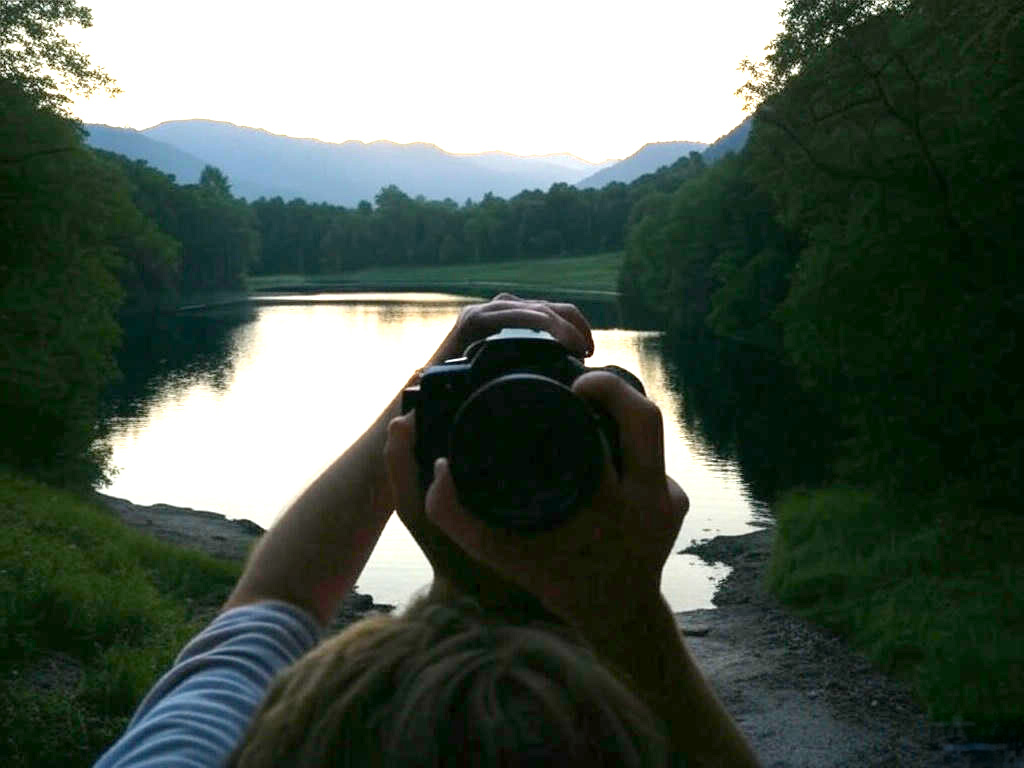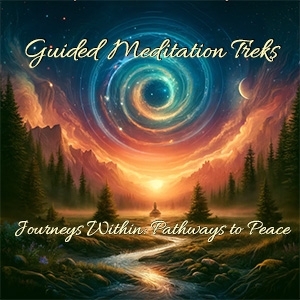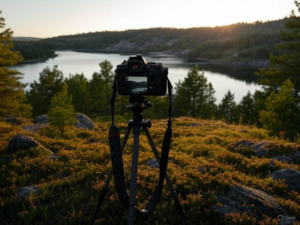
Photography can be more than just snapping a picture—it’s a powerful mindful photography practice, especially when paired with the serenity of nature. On a meditation trek, where every step reveals new sights, sounds, and sensations, mindful photography encourages you to slow down, observe deeply, and connect with the world around you. This guide will show you how to transform your camera or smartphone into a tool for mindfulness practice, helping you capture nature’s beauty with intention while fostering a deeper nature connection.
Why Practice Mindful Photography on a Trek?
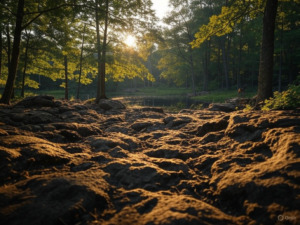
Mindful photography isn’t about chasing the perfect Instagram shot—it’s about being fully present and using your camera to anchor yourself in the moment. When you practice nature photography during a trek, you train your mind to notice details like the way sunlight filters through leaves, the texture of a rocky path, or the fleeting movement of a deer in the distance. This outdoor meditation practice deepens your connection to nature, sharpens your awareness, and fosters gratitude for the world’s fleeting beauty. It’s a form of forest bathing that combines mindfulness with creativity, enhancing your overall nature mindfulness.
Learn more about the bringing nature home with our Nature Meditation App.
7 Steps to Practice Mindful Photography on Your Next Meditation Trek
1. Set an Intention Before You Start
Before embarking on your meditation trek, take a moment to ground yourself. Close your eyes, take a few deep breaths, and set an intention for your mindful photography practice. It could be as simple as “I will notice the small details” or “I will capture moments that bring me peace.” This intention will guide your focus and keep you anchored in the present, enhancing your nature connection.
2. Leave the Rush Behind for Slow Photography
Slow photography is key to mindfulness. Resist the urge to snap photos quickly or chase a checklist of shots. Instead, pause frequently during your trek. Stand still, observe your surroundings, and let the landscape speak to you. Ask yourself: What catches my eye? What feels alive in this moment? Only lift your camera when you feel a genuine connection to the scene, ensuring your trekking photography remains intentional.
3. Engage All Your Senses for a Deeper Experience
Before taking a photo, engage all your senses to fully immerse yourself in the moment. Listen to the rustle of leaves or the trickle of a stream. Feel the breeze on your skin or the warmth of the sun. Smell the earth or the pine needles underfoot. By tuning into your senses, you’ll notice details that make your nature photography more meaningful and authentic, enhancing your outdoor meditation.
4. Look for the Ordinary in Nature’s Beauty
Nature’s beauty doesn’t always lie in grand vistas. Practice seeing the extraordinary in the ordinary—a dew-covered spiderweb, a weathered tree trunk, or a single wildflower pushing through the soil. These small details often hold profound stories. Use your camera to honor them, experimenting with angles or close-ups to capture their essence in your serene landscapes.
5. Let Go of Perfection and Embrace Presence
Intentional photography isn’t about technical perfection—it’s about presence. Don’t worry about getting every shot in focus or perfectly composed. Instead, focus on how the act of photographing makes you feel. If a blurry photo captures the joy of a moment, it’s just as valuable as a crisp one. Release judgment and embrace the process, prioritizing mindfulness practice over perfection.
6. Pause After Each Shot to Stay Mindful
After taking a photo, lower your camera and take a deep breath. Look at the scene again with your naked eyes, not through the lens. Reflect on what drew you to capture it. This pause reinforces your mindfulness, helping you stay connected to the moment rather than getting lost in the mechanics of photography—a core principle of nature mindfulness.
7. Limit Your Shots for Intentional Photography
To stay intentional, challenge yourself to take fewer photos. For example, set a goal to capture only five images during your trek. This constraint encourages you to be selective, choosing moments that truly resonate. It also prevents you from getting distracted by your camera and missing the experience of the trek itself, ensuring your trekking photography remains mindful.
4 Tips for Deepening Your Mindful Photography Practice
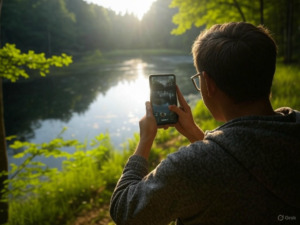
- Use a Smartphone for Simplicity: If you’re new to mindful photography, your smartphone is a great tool. Its simplicity allows you to focus on presence rather than fiddling with settings. Plus, it’s lightweight for treks, making it ideal for trekking photography.
- Try Black-and-White Photography: Stripping away color can help you focus on textures, shapes, and contrasts, enhancing your attention to detail in black-and-white photography. This technique is perfect for capturing serene landscapes.
- Create a Gratitude Ritual: After your trek, review your photos and reflect on one thing each image makes you grateful for. This gratitude ritual deepens your connection to nature and the practice, enhancing your nature mindfulness.
- Avoid Editing Right Away: Resist the urge to edit or post your photos immediately. Let them sit for a day or two, allowing the experience to linger in your memory—a key aspect of slow photography.
A Sample Mindful Photography Trek: Finding Peace in Nature
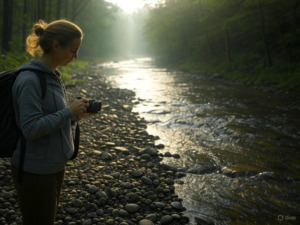
Imagine you’re on a meditation trek through a forest trail at dawn. You pause by a stream, feeling the cool air on your face. You hear the gentle gurgle of water and notice a single pebble glistening in the morning light. Instead of snapping a quick photo, you crouch down, observing the pebble’s smooth surface and the way the water ripples around it. You take a deep breath, feeling grateful for this quiet moment. Only then do you lift your camera, framing the pebble in a way that captures its simplicity. After the shot, you lower the camera, smile, and continue your trek, carrying that moment of calm with you—a perfect example of nature connection through mindful photography.
Final Thoughts on Mindful Photography and Meditation Treks
 Mindful photography is a bridge between meditation and creativity, allowing you to capture nature’s beauty while staying fully present. On your next meditation trek, let your camera be a tool for mindfulness, guiding you to see the world with fresh eyes. By slowing down and practicing intentional photography, you’ll not only create meaningful images but also deepen your connection to the natural world—and to yourself. For more photography tips, check out this National Geographic guide on mindful photography.
Mindful photography is a bridge between meditation and creativity, allowing you to capture nature’s beauty while staying fully present. On your next meditation trek, let your camera be a tool for mindfulness, guiding you to see the world with fresh eyes. By slowing down and practicing intentional photography, you’ll not only create meaningful images but also deepen your connection to the natural world—and to yourself. For more photography tips, check out this National Geographic guide on mindful photography.
About the Author
Guest author bio: Grok is a mindfulness enthusiast and nature lover who combines trekking photography, outdoor meditation, and photography to find peace in the outdoors.
A Note from Russell
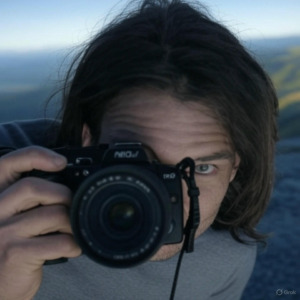
Although it may seem counterintuitive, I wholeheartedly believe that photography can be a mindful practice during travel. I made mindful photography a huge part of my trip around the world to help me stay present. Some might argue that “looking for the perfect shot” can take you out of the moment. After all, “capturing the moment” is not the same as “being in the moment.” That said, being mindful of which path you take—whether that’s simply being present or using photography to anchor you in the present—is mindfulness in and of itself. Enjoy the AI-generated photo of me taking a photo, courtesy of Grok.


